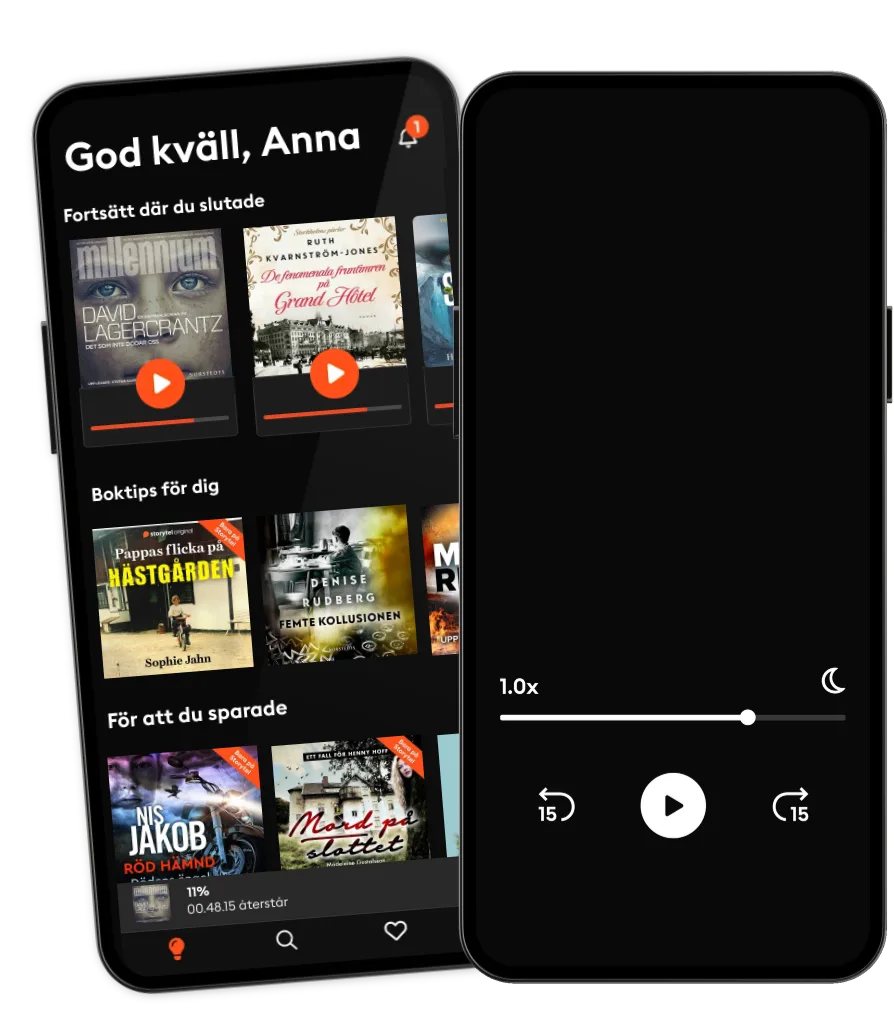Lyssna när som helst, var som helst
Kliv in i en oändlig värld av stories
- 1 miljon stories
- Hundratals nya stories varje vecka
- Få tillgång till exklusivt innehåll
- Avsluta när du vill

Pro Eto - That's What
- Av
- Förlag
Vladimir Mayakovsky was one of the towering literary figures of pre- and post-revolutionary Russia, speaking as much to the working man as to other poets. His fascination with sound and form, linguistic metamorphosis and variation made him a sort of 'poet's poet', the doyen, if not the envy, of his contemporaries, (Pasternak among them). His poetry is strangely akin to modern rock poetry in its erotic thrust, bluesy complaints and cries of pain, not to mention its sardonic humour. It is often aggressive, mocking and yet tender, and can be fantastic or grotesque. That's What is a long love poem detailing the pain and suffering inflicted on the poet by his lover Maria and her final rejection of him. But as well as being an agonising parable of separation and betrayal, it is also a political work, highly critical of Lenin's reforms of Soviet Socialism.
The publication of That's What is something of a landmark as this the first time that this seminal work has appeared in its entirety in translation. Included also are the 12 inspired photomontages that Rodchenko designed to interleave and illuminate the text, illustrations which inaugurate a world of new possibilities in combining verbal and visual forms of expression and which are reproduced in colour for the first time.
"Arc have produced a handsome Russian-English edition of this personal epic of the early years of the Revolution, first published in the LEF journal (Left Front of the Arts) in 1923. George Hyde adds a lively note on 'Translating Mayakovsky's That's What'. His co-translator, Larisa Gureyeva, is the granddaughter of V.M. Molotov-Skryabin, co-signatory of the notorious pact with Germany of 1939. Hyde writes of the 'permissive' 1920s in the early Soviet Union. Following the recent splendid exhibition of Rodchenko and Popova at the Tate Modern, there are increasing signs of a growing interest in the early, tumultuous years of the Russian Revolution." The Spokesman Vladimir Mayakovsky was born in Georgia in 1893, but moved with his family to Moscow after his father's sudden death. By the time he was 20, he was a well-known literary figure, having toured Russia in the winter of 1913-14 with the Futurists (with whom he had identified). He made several trips abroad during the 1920s, including a long visit to America in 1925. A prolific writer, he still remains a popular poet among present-day Russian readers. He died in 1930 by his own hand, killing himself playing Russian roulette with a single bullet. Aleksander Rodchenko was a Russian artist, sculptor and photographer and one of the most versatile Constructivist and Productivist artists to emerge after the Russian Revolution. This book is also available as an ebook: buy it from Amazon here.
© 2008 Arc Publications (E-bok): 9781908376381
Översättare: George Hyde, Larissa Gureyeva
Utgivningsdatum
E-bok: 1 oktober 2008
Taggar
Andra gillade också ...
- The Hard Crowd: Essays 2000-2020 Rachel Kushner
- The Diary of a Madman and Other Stories Nikolai Gogol
- The RUM DIARY: A Novel Hunter S. Thompson
- Agamemnon Aeschylus
- The Vory: Russia's Super Mafia Mark Galeotti
- Love and Saint Augustine Hannah Arendt
- The Master: Shortlisted for the Man Booker Prize Colm Tóibín
- A Brief History of Equality Thomas Piketty
- Journey to the End of the Night Louis-Ferdinand Celine
- James: Winner of the 2025 Pulitzer Prize for Fiction Percival Everett
- Väninnorna på Nordiska Kompaniet Ruth Kvarnström-Jones
4.1
- Säpogruppen 1 – Ryssvillan Anders Jallai
4.2
- De fenomenala fruntimren på Grand Hôtel Ruth Kvarnström-Jones
4.5
- Läkarens fru Daniel Hurst
3.7
- Livvakten Dag Öhrlund
3.8
- Sömngångaren Lars Kepler
4.2
- Den högra handen Peter Nyström
4
- Lockbetet Leffe Grimwalker
4.1
- Död mans kvinna Katarina Wennstam
4.3
- Läkarens änka Daniel Hurst
3.8
- Ord mot ord Steve Cavanagh
4.4
- Hembiträdet Freida McFadden
4.2
- Anklagelsen Aud Midtsund
4.3
- Flickan och ättikan Maria Rydhagen
4.6
- Utpekad: Goaren : Einár, Dumle och hon som överlevde Nina Svanberg
3.7
Därför kommer du älska Storytel:
1 miljon stories
Lyssna och läs offline
Exklusiva nyheter varje vecka
Kids Mode (barnsäker miljö)
Premium
Lyssna och läs ofta.
1 konto
100 timmar/månad
Exklusivt innehåll varje vecka
Avsluta när du vill
Obegränsad lyssning på podcasts
Unlimited
Lyssna och läs obegränsat.
1 konto
Lyssna obegränsat
Exklusivt innehåll varje vecka
Avsluta när du vill
Obegränsad lyssning på podcasts
Family
Dela stories med hela familjen.
2-6 konton
100 timmar/månad för varje konto
Exklusivt innehåll varje vecka
Avsluta när du vill
Obegränsad lyssning på podcasts
2 konton
239 kr /månadFlex
Lyssna och läs ibland – spara dina olyssnade timmar.
1 konto
20 timmar/månad
Spara upp till 100 olyssnade timmar
Exklusivt innehåll varje vecka
Avsluta när du vill
Obegränsad lyssning på podcasts
Betyg och recensioner
Recensioner i en blick
4.4
Total betyg baserat på 37 betyg
Andra beskrev boken så här
Informativo
Inspirador
Motivador
Ladda ner appen för att delta i diskussionen och lägg till recensioner.
Svenska
Sverige